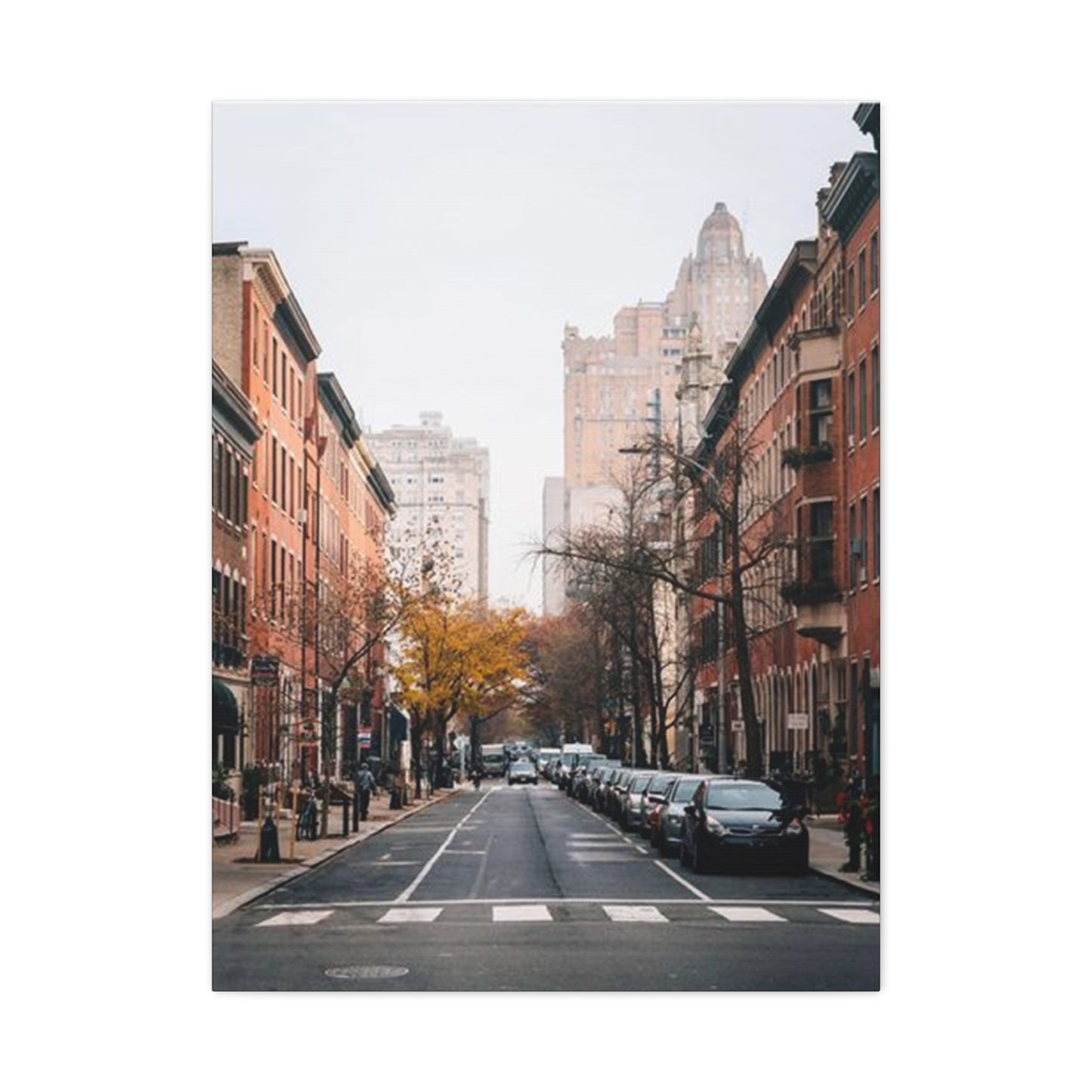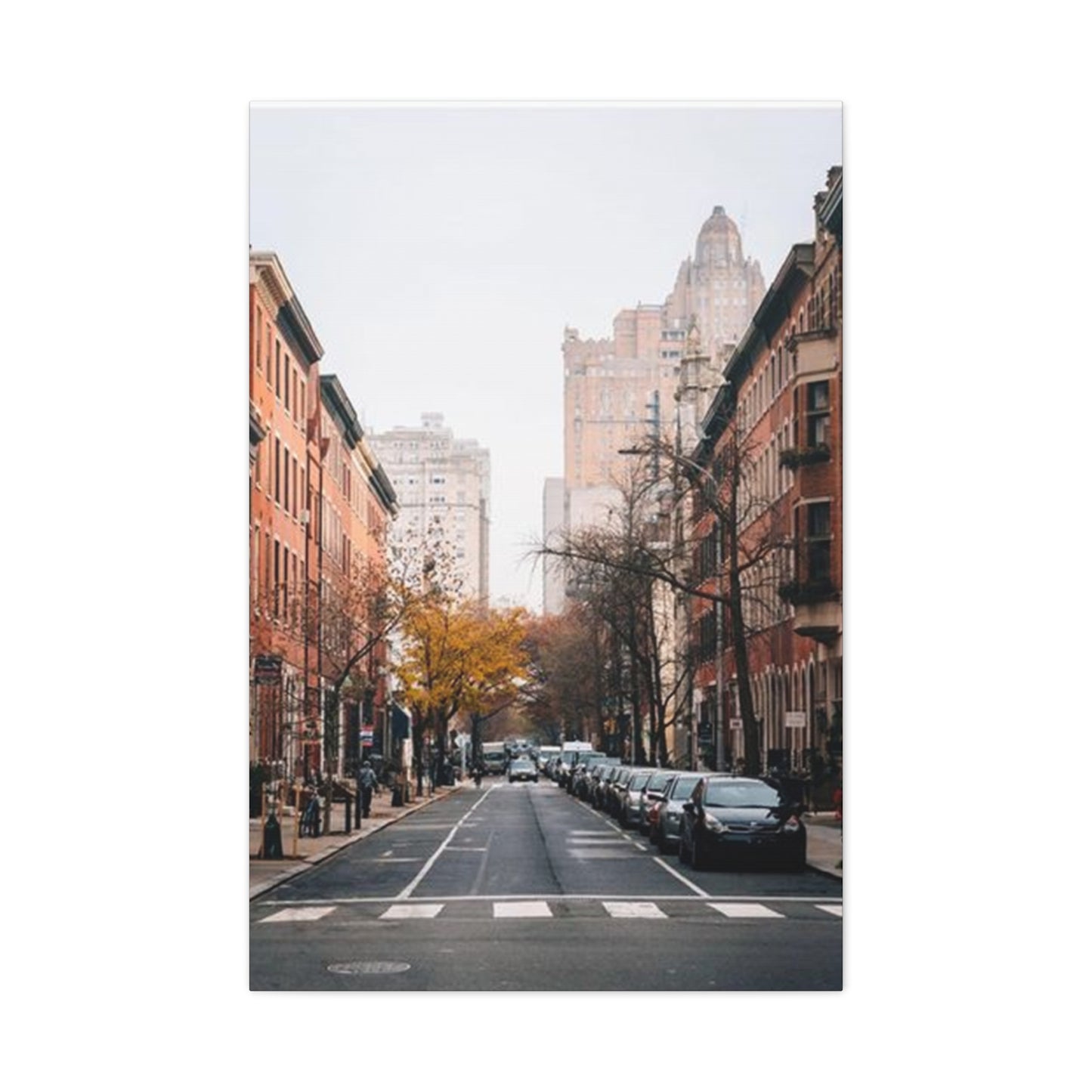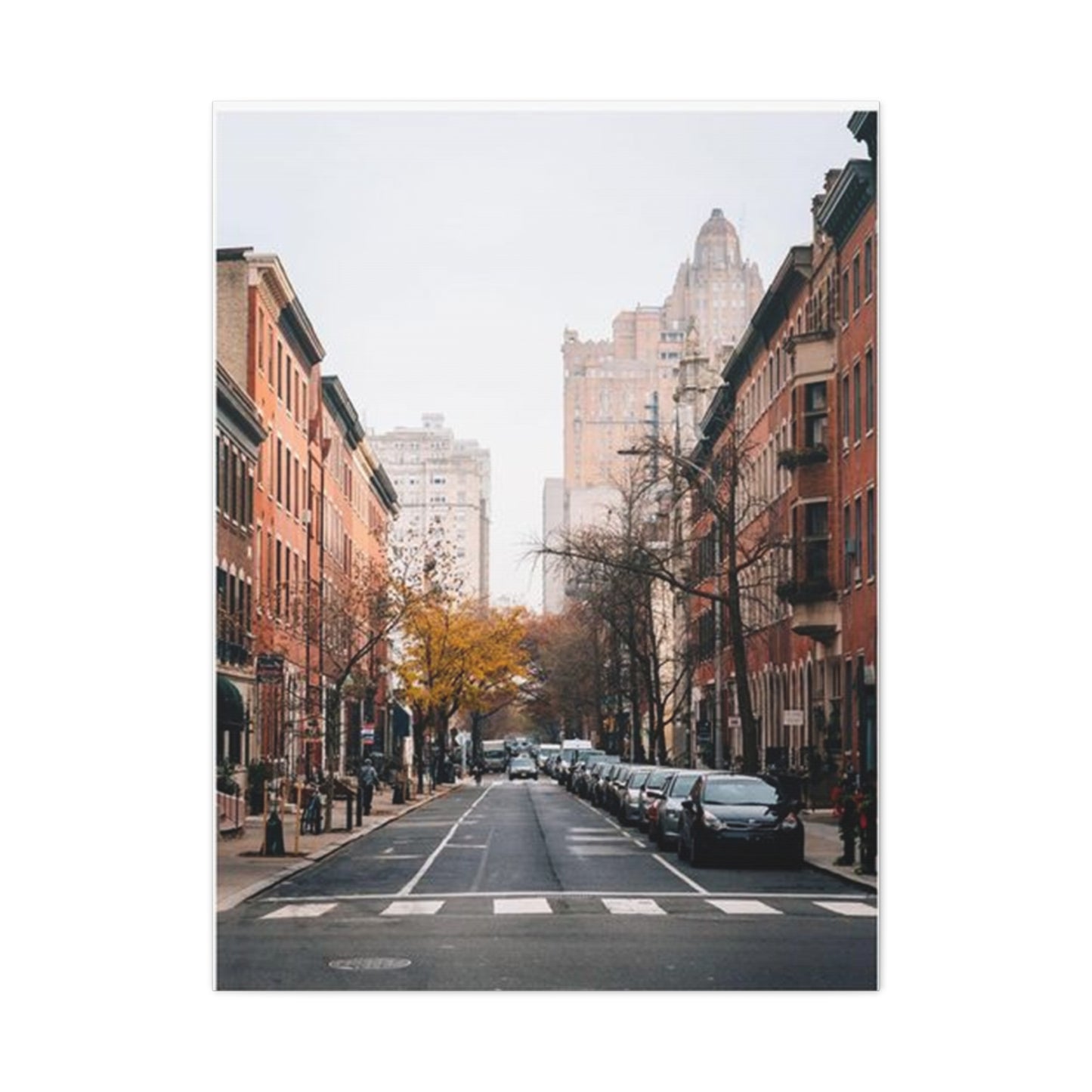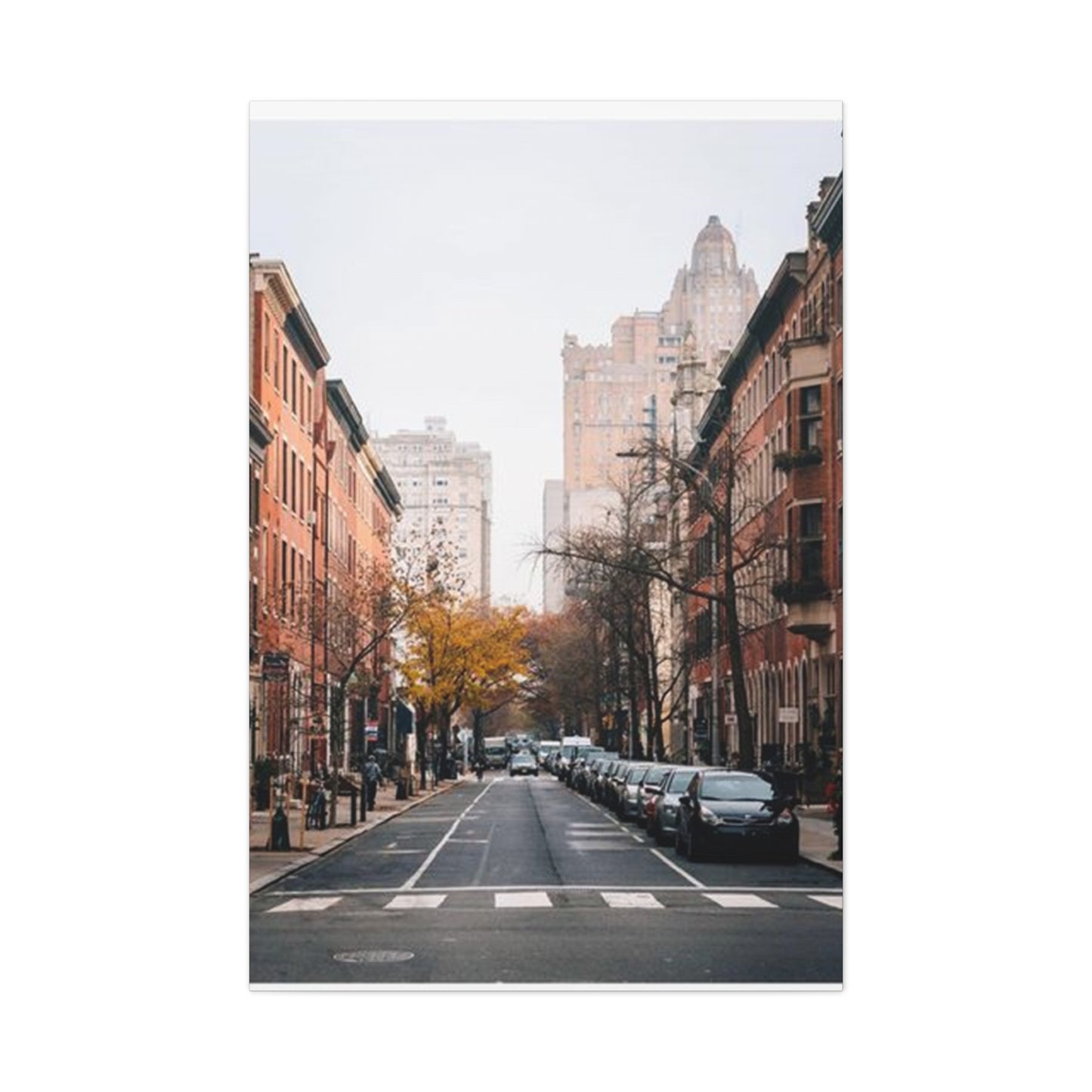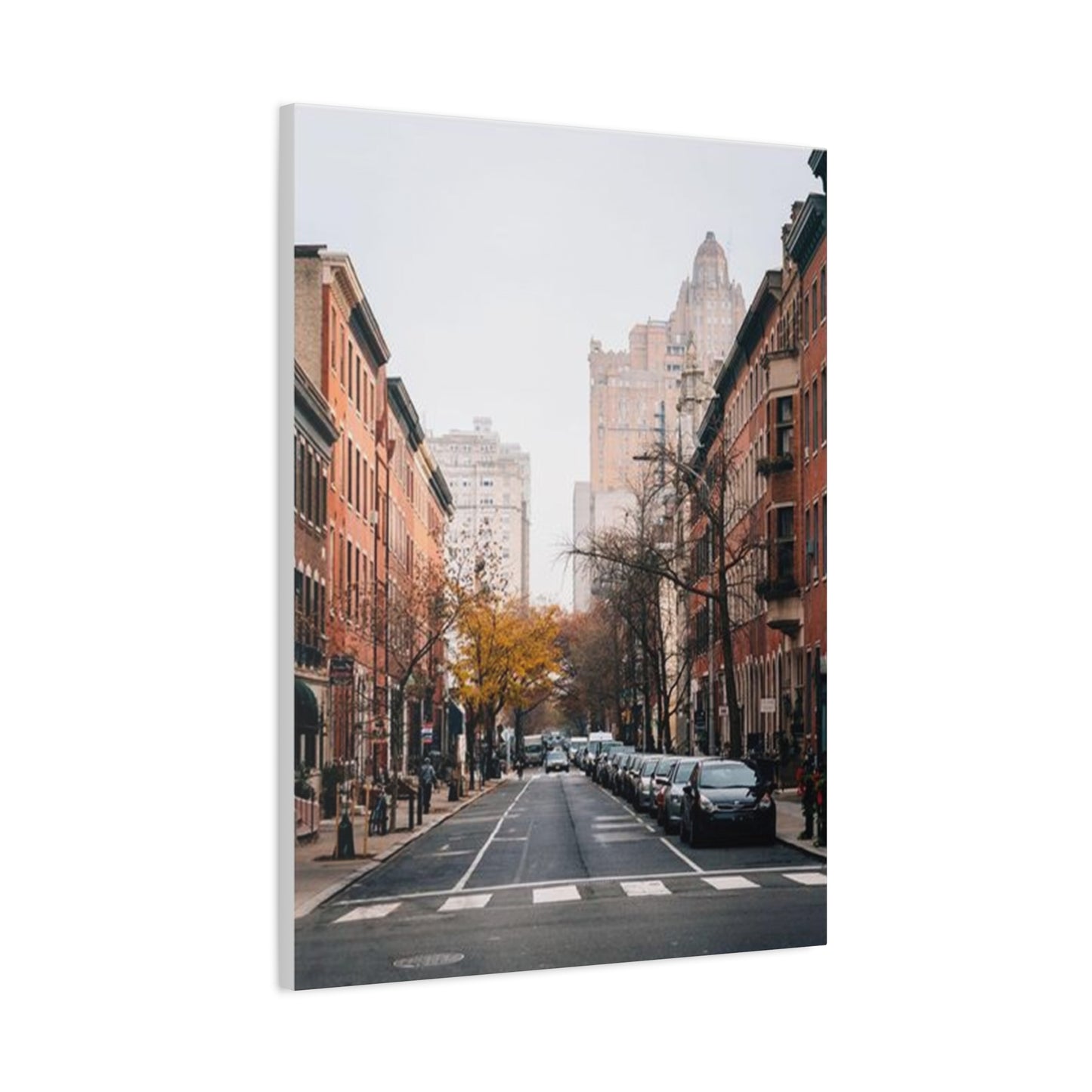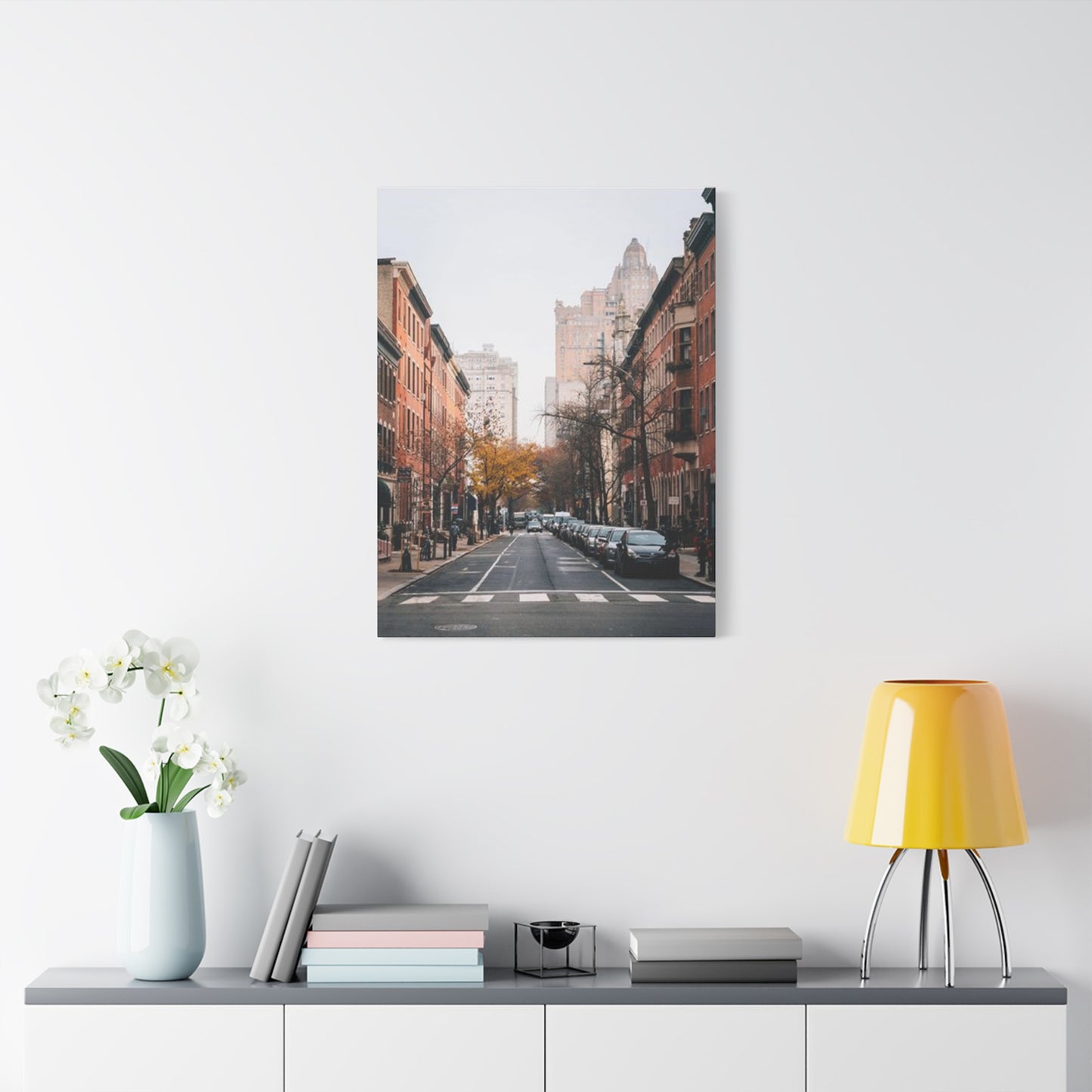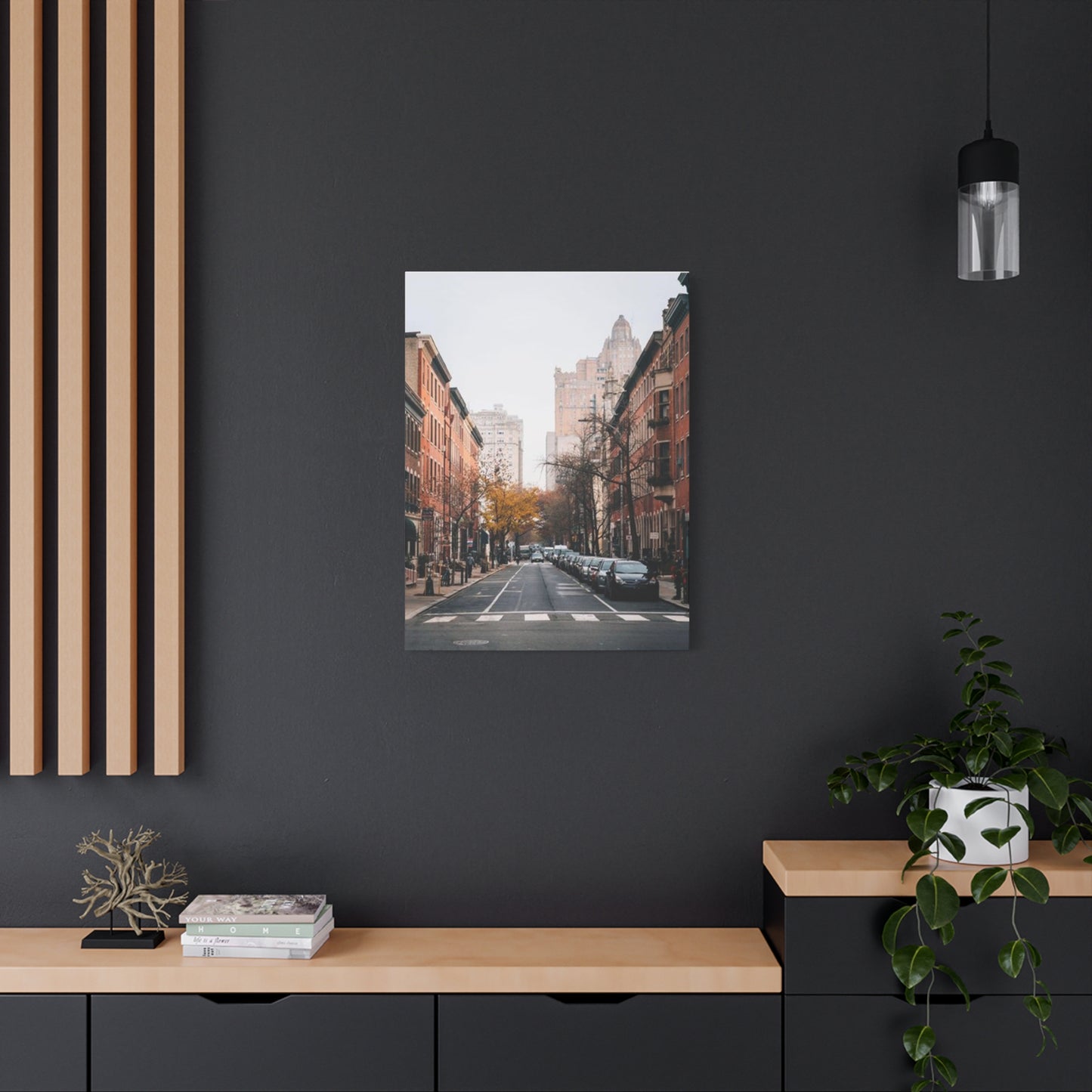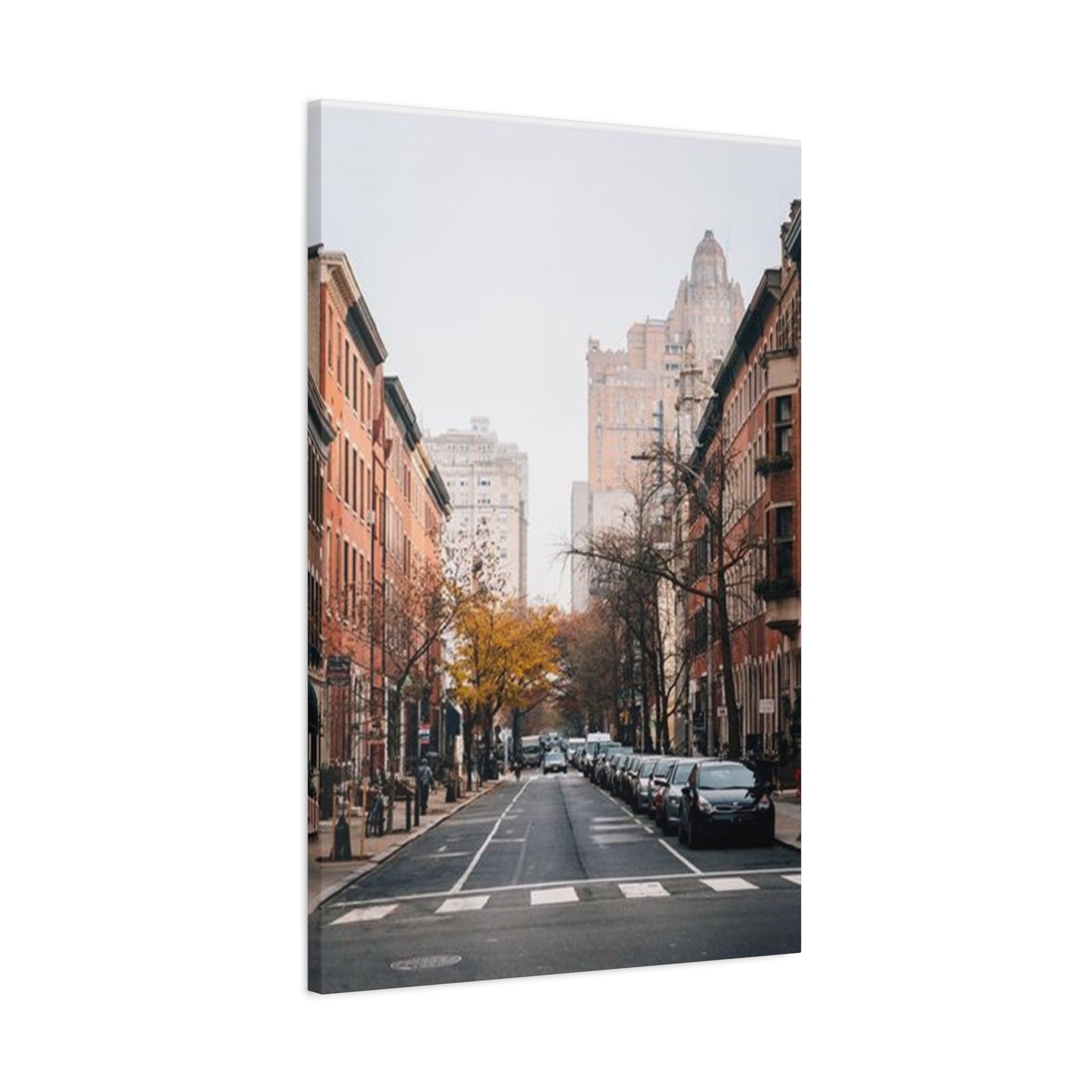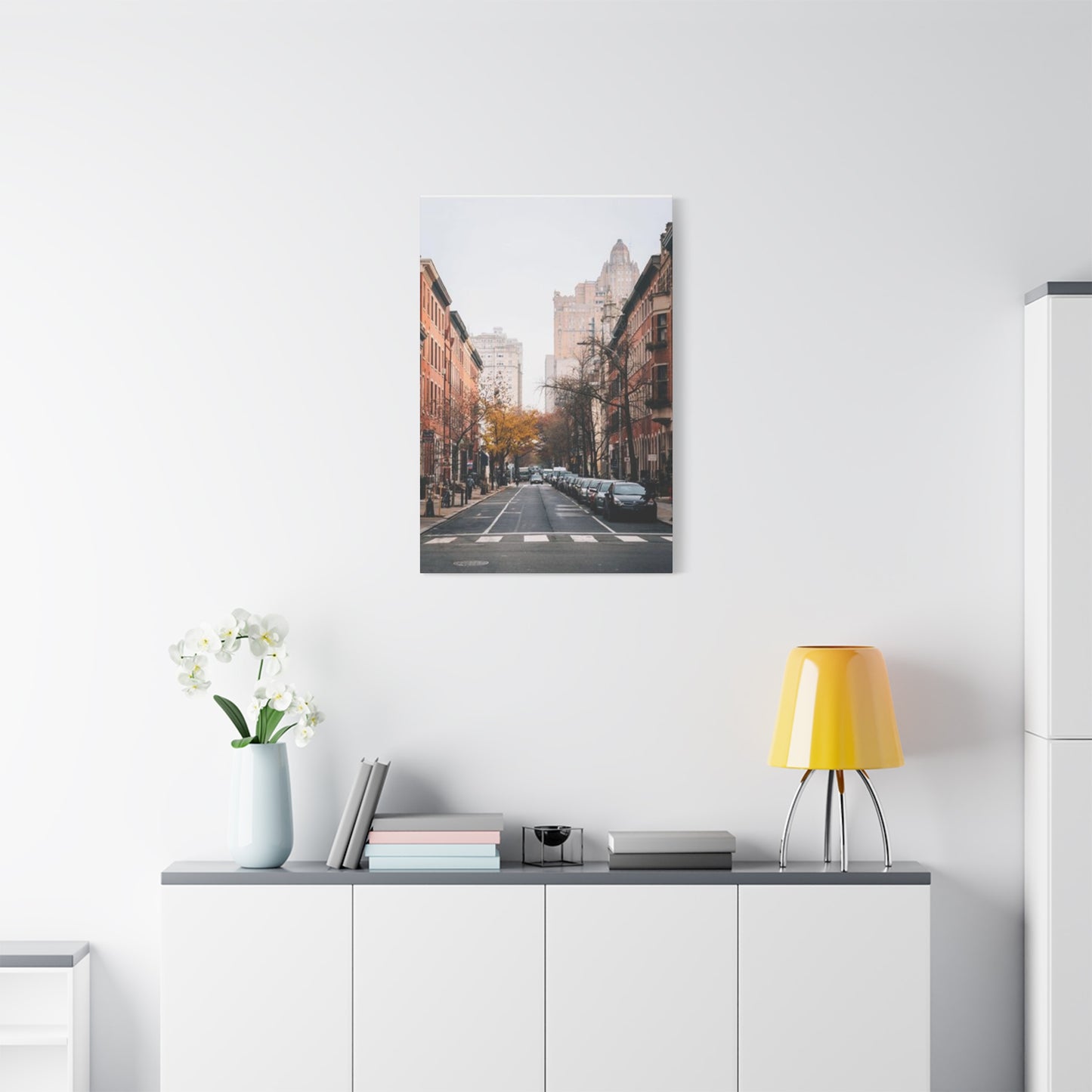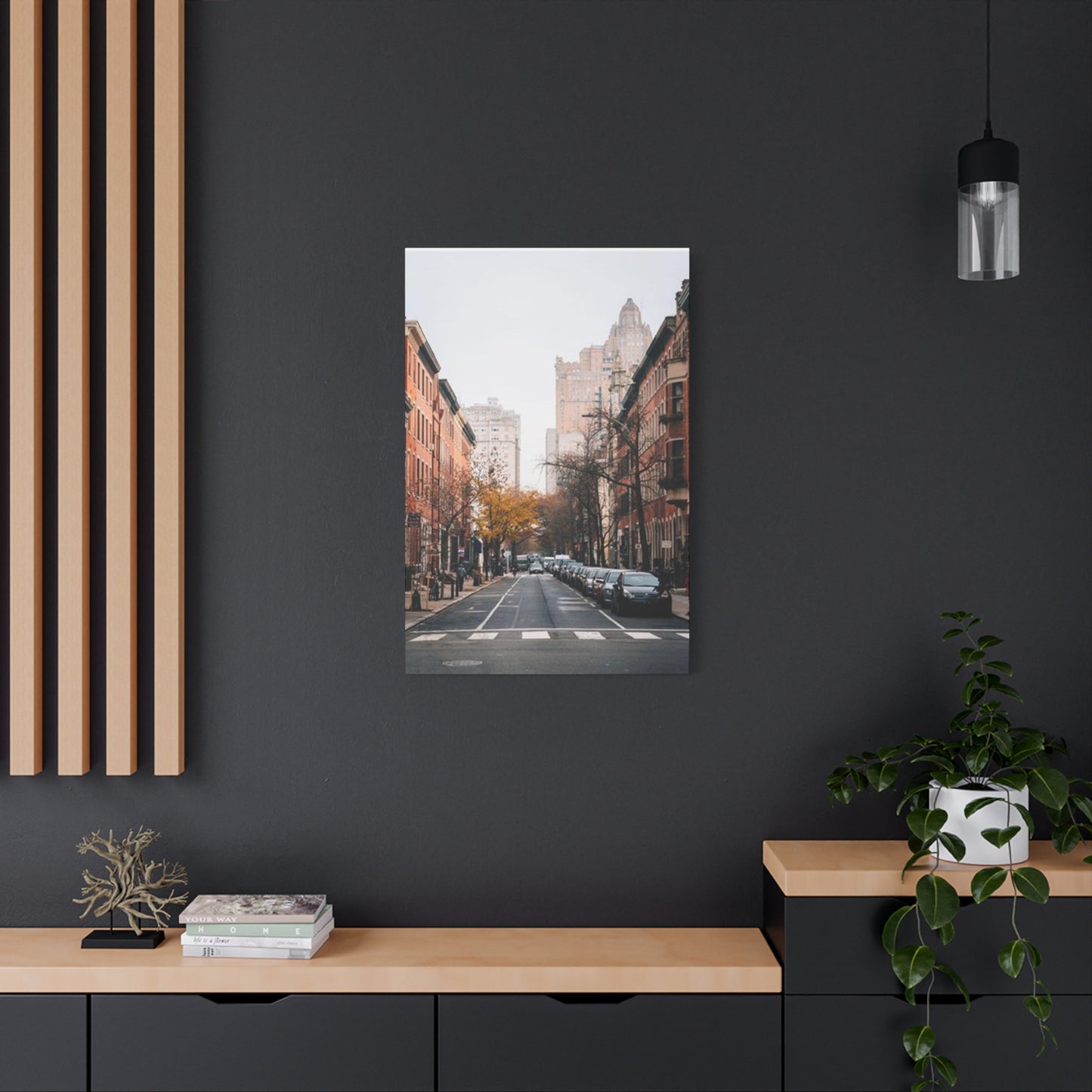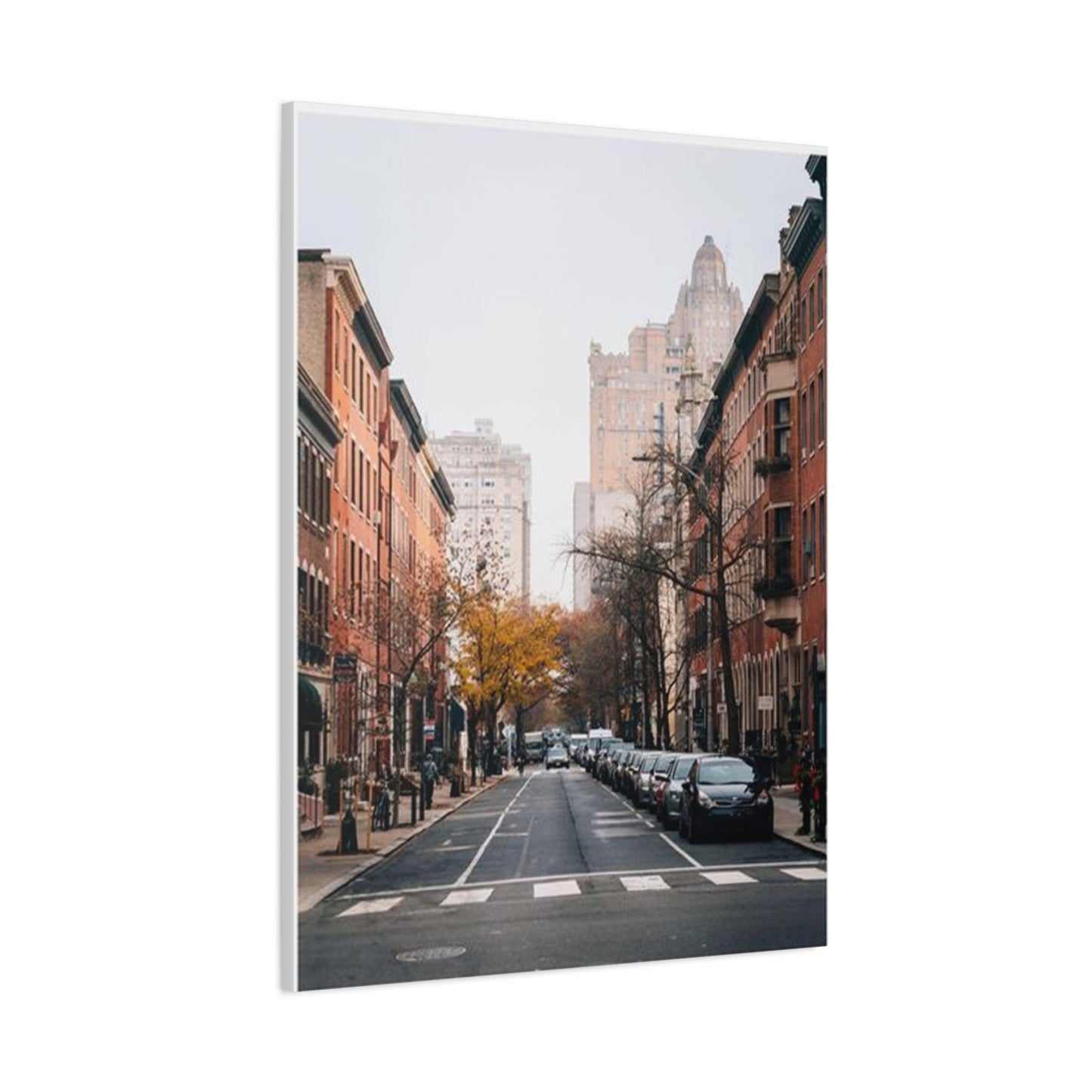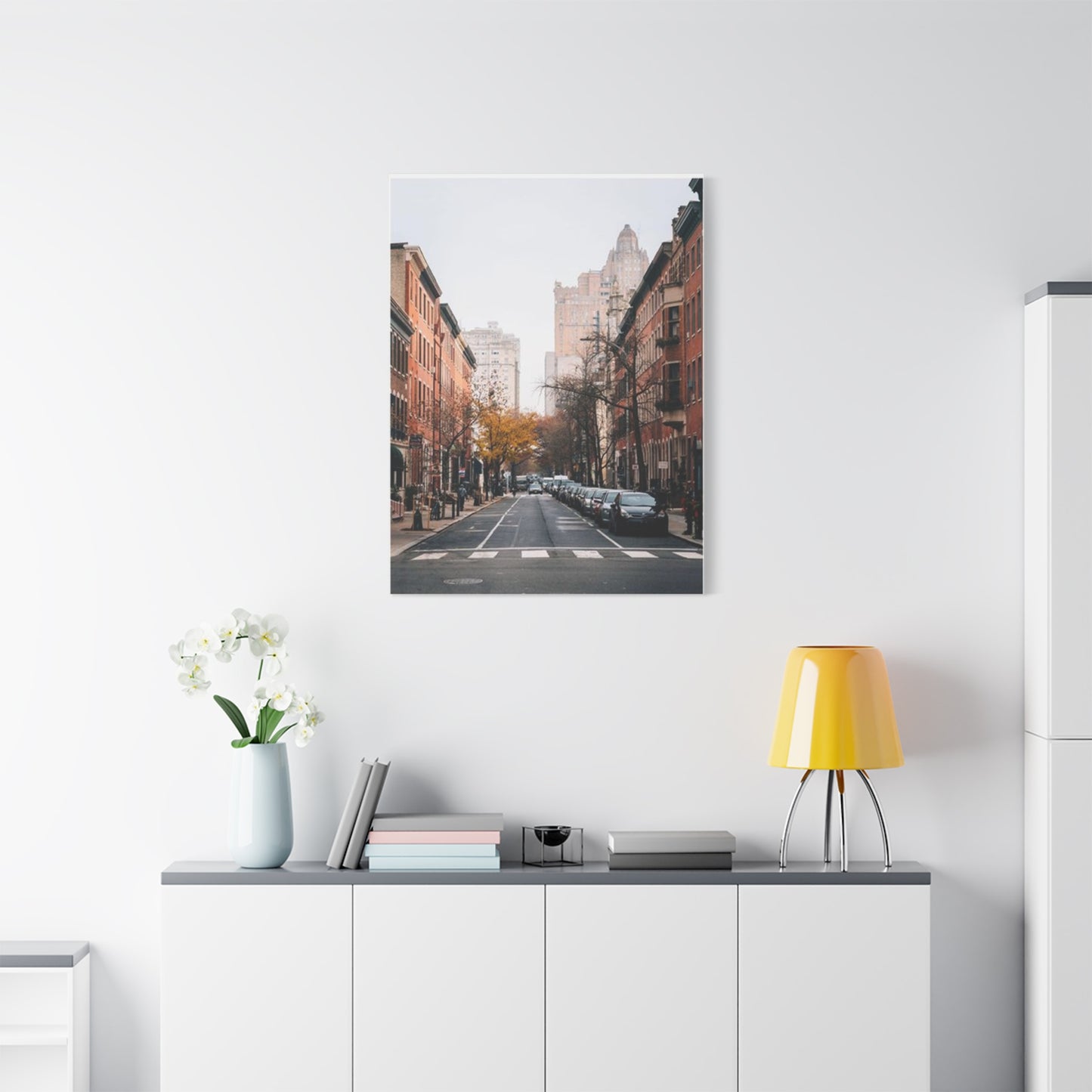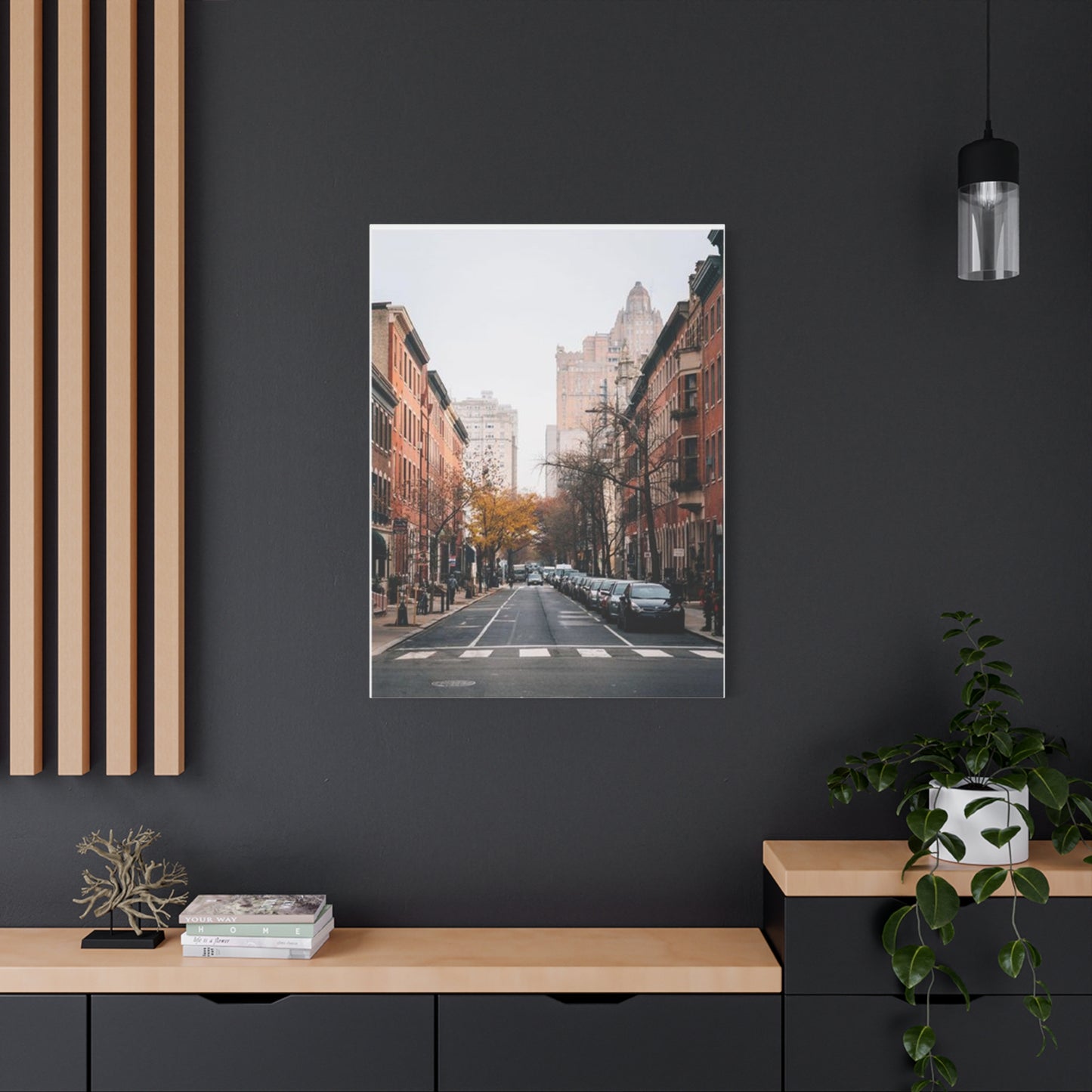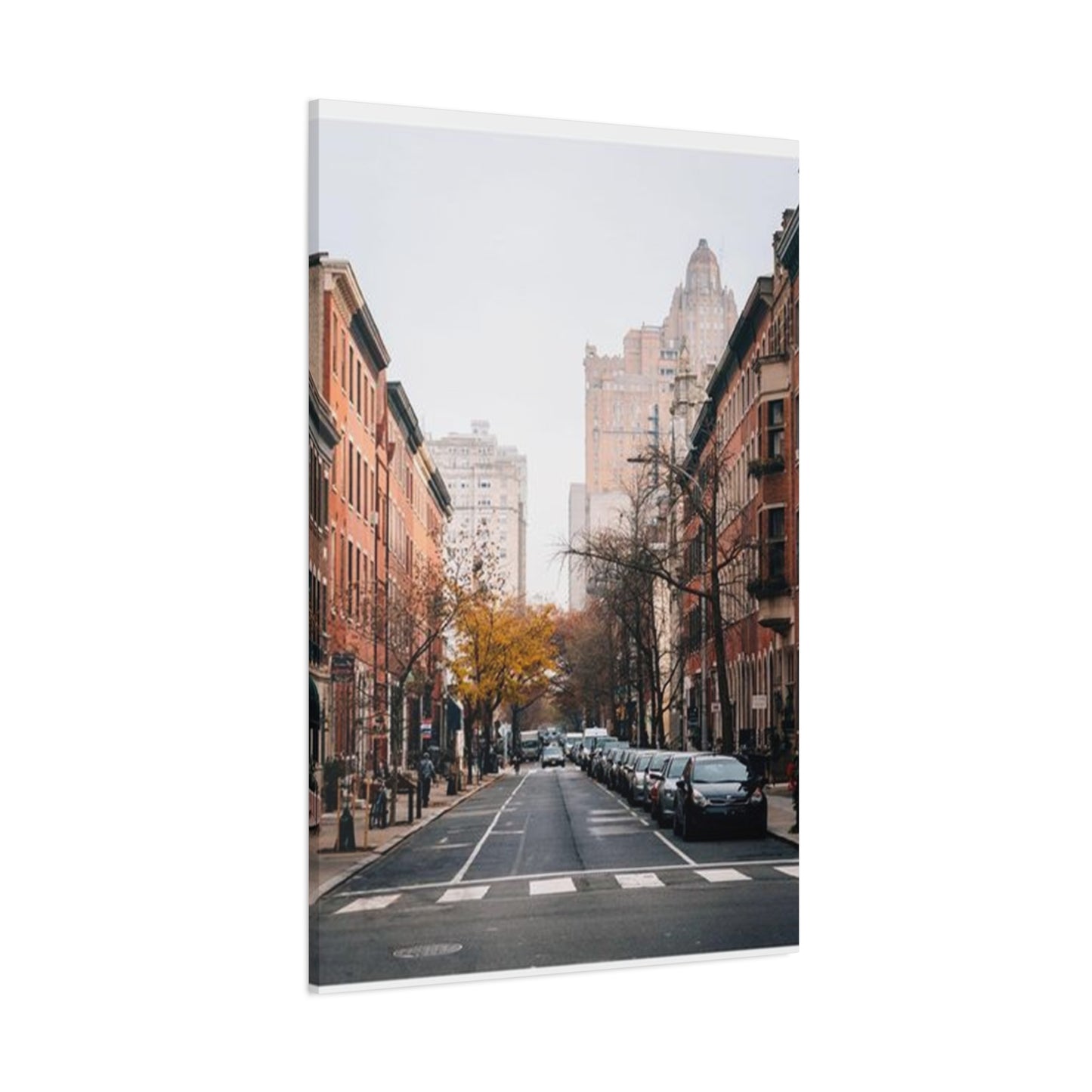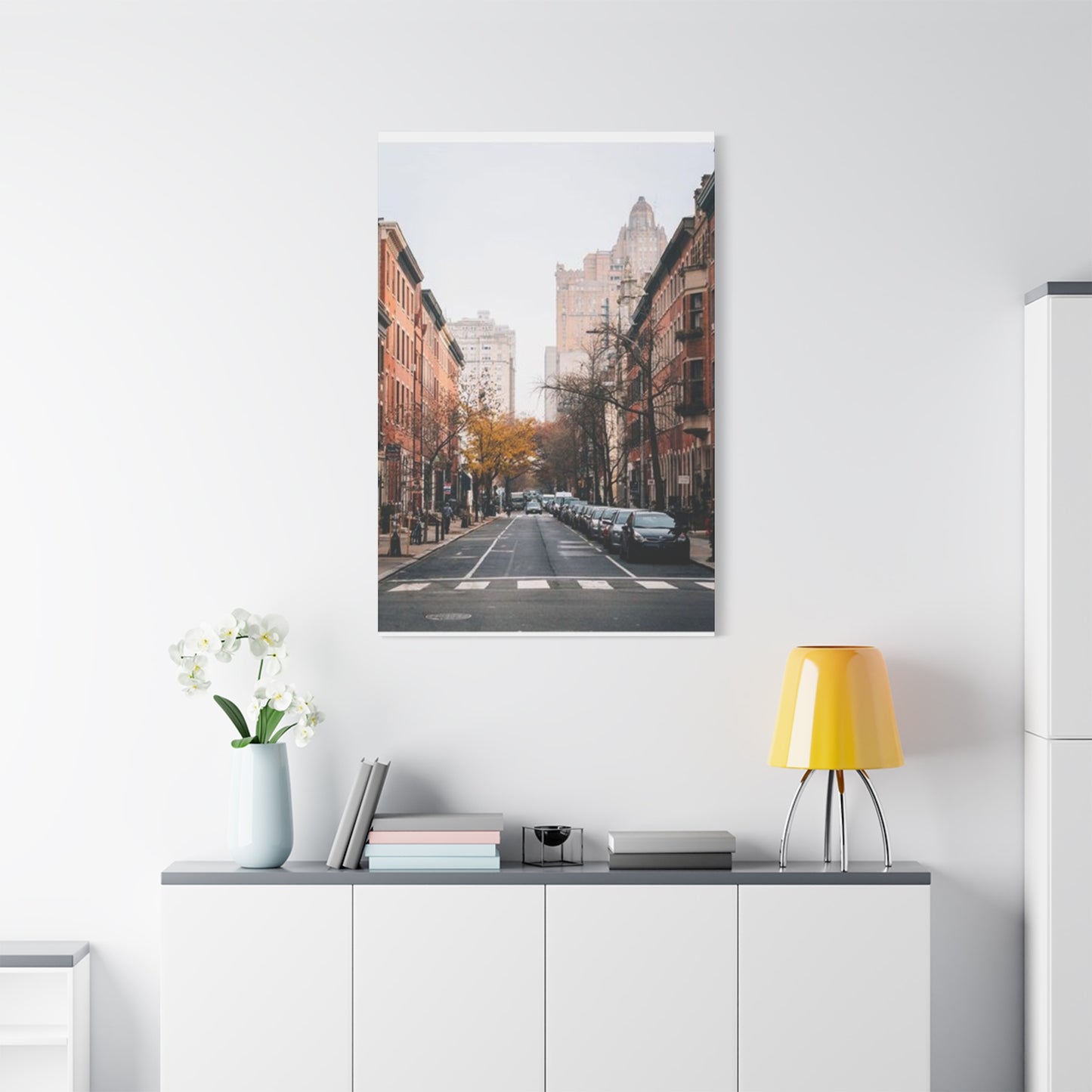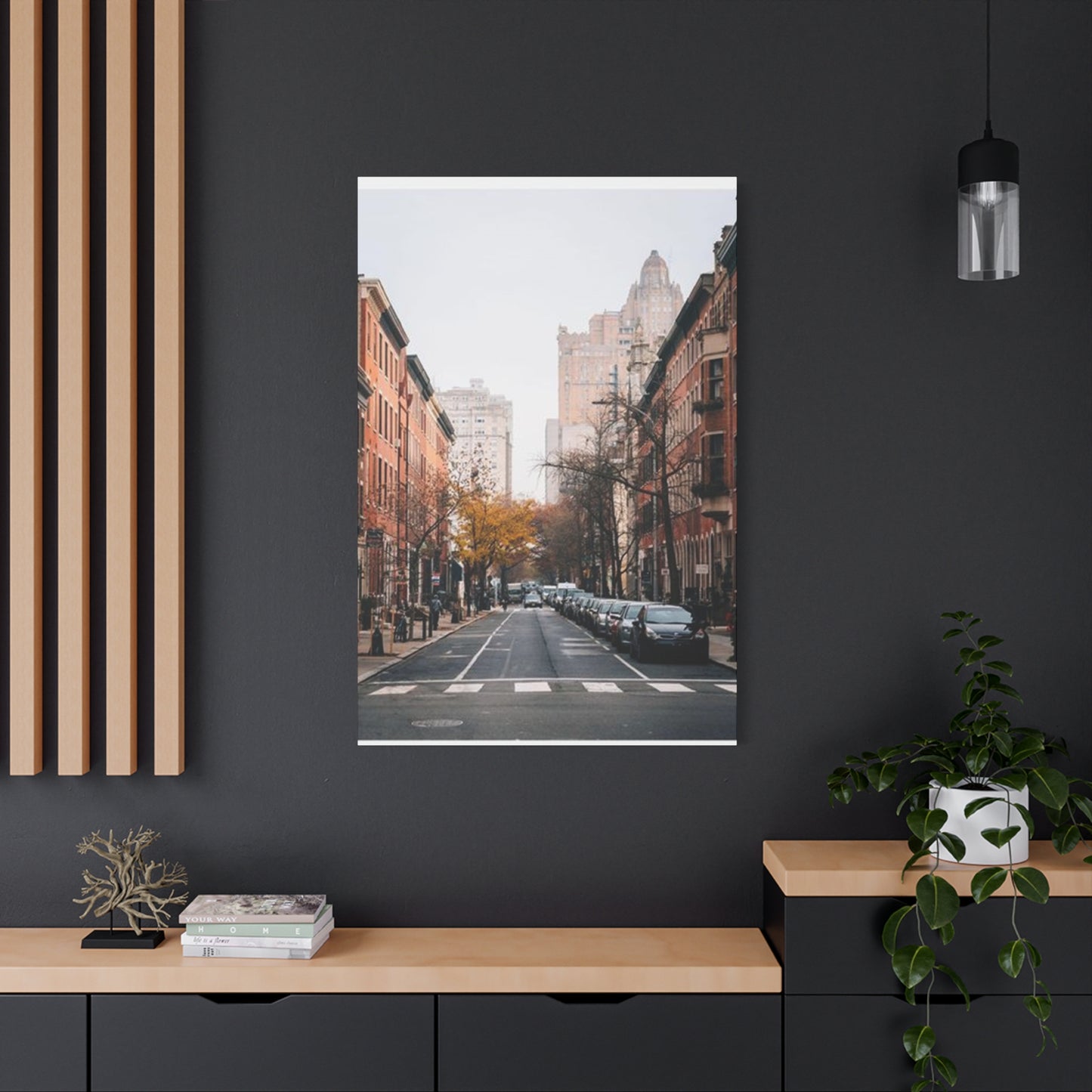Streets of Philadelphia Wall Art: A Complete Guide to Capturing the City's Soul
Philadelphia stands as one of America's most historically significant cities, where cobblestone pathways meet contemporary murals and centuries-old architecture blends seamlessly with modern urban development. The visual richness found throughout this remarkable metropolis has inspired countless artists to translate its essence onto canvas, creating stunning pieces that celebrate the character, history, and vibrant energy of its thoroughfares. Whether you're drawn to the nostalgic appeal of historic districts or the dynamic pulse of bustling avenues, Philadelphia's streetscapes offer endless inspiration for collectors and decorators seeking meaningful artwork that tells a story.
Canvas prints featuring Philadelphia's streets have become increasingly popular among those who appreciate the city's unique architectural heritage and cultural significance. These artistic representations serve multiple purposes: they function as beautiful decorative elements, conversation starters, nostalgic reminders of cherished memories, and tributes to one of America's most beloved cities. From the tree-lined pathways of Society Hill to the colorful row houses of South Philadelphia, from the grand boulevards near City Hall to the intimate alleyways of Old City, each neighborhood presents distinct visual characteristics that artists capture in remarkably diverse ways.
This comprehensive guide explores every aspect of acquiring, displaying, and appreciating artwork that showcases Philadelphia's streets. We'll examine how artists capture the city's distinctive urban atmosphere, discuss the various artistic approaches used to represent famous locations, provide practical advice for selecting pieces that complement your living environment, and offer expert guidance on maintaining and showcasing these beautiful tributes to the City of Brotherly Love. Whether you're a lifelong Philadelphia resident, someone who has visited and fallen in love with the city, or simply an admirer of urban landscape artwork, this guide will help you navigate the exciting world of Philadelphia street-themed canvas prints.
Historic Charm in Streets of Philadelphia Art
The historical significance of Philadelphia cannot be overstated, as this city served as the birthplace of American democracy and witnessed countless pivotal moments in the nation's formation. Artists who focus on capturing the historic charm of Philadelphia's streets tap into centuries of architectural evolution, cultural development, and social transformation. These works often highlight the preserved colonial-era buildings, federal-style townhouses, and Victorian-era structures that continue to define many neighborhoods throughout the city.
When examining artwork that emphasizes historic charm, you'll notice that artists pay particular attention to architectural details that reveal the passage of time. Weathered brick facades showing centuries of patina, ornate door frames featuring brass knockers and handcrafted woodwork, decorative shutters painted in traditional colors, and gas lamp-style street lighting all contribute to the nostalgic atmosphere these pieces evoke. The cobblestone streets themselves become central elements in many compositions, their uneven surfaces and varied textures speaking to the countless footsteps that have traversed them over hundreds of years.
Many artists choose to depict Philadelphia's historic streets during different times of day to capture various moods and lighting conditions. Morning scenes might show soft golden light washing over brick buildings as the city awakens, creating long shadows and highlighting architectural details with warm tones. Afternoon representations often feature brighter, more direct illumination that emphasizes the contrast between sunny facades and shadowed doorways. Evening and twilight scenes prove particularly popular, as they allow artists to incorporate the warm glow of interior lights spilling from windows, street lamps creating pools of illumination on cobblestones, and the magical quality of fading daylight against historic structures.
The seasonal variation in Philadelphia provides another layer of interest for artists focusing on historic charm. Autumn scenes featuring golden leaves against red brick buildings create particularly appealing color harmonies. Winter compositions often show snow-dusted streets and buildings, with the stark contrast between white snow and dark brick creating dramatic visual impact. Spring artwork might incorporate blooming trees and flowers in window boxes, adding touches of fresh color to the timeless architecture. Summer representations often emphasize the lush greenery that softens the urban environment and provides relief from the dominance of brick and stone.
Artists working in this genre frequently focus on specific historic neighborhoods known for their well-preserved character. Society Hill, with its concentration of colonial and federal-era buildings, provides endless subject matter for those seeking to capture authentic period architecture. Elfreth's Alley, recognized as America's oldest continuously inhabited residential street, offers a particularly concentrated glimpse into colonial Philadelphia and appears frequently in historic-themed artwork. Old City, with its mixture of preserved eighteenth-century buildings and converted warehouses, presents opportunities to show the layering of different historical periods within a single streetscape.
The technical approach artists use when creating historic Philadelphia street scenes varies considerably based on their artistic training and aesthetic preferences. Some favor highly realistic, almost photographic renderings that meticulously document every architectural detail, brick texture, and shadow pattern. These detailed works appeal to history enthusiasts and those who appreciate technical precision in artwork. Other artists take a more impressionistic approach, suggesting historic character through looser brushwork, simplified forms, and emphasis on overall atmosphere rather than precise architectural documentation. This style often creates a dreamlike, nostalgic quality that evokes emotional responses rather than serving as historical record.
Color palettes in historic Philadelphia street artwork tend toward earth tones that reflect the predominant building materials found throughout older neighborhoods. Rich reds and deep oranges represent the ubiquitous brick construction that defines so much of the city's architectural character. Warm browns and tans suggest aged wood, weathered stone, and sun-faded awnings. Deep greens often appear in painted shutters, doors, and decorative elements. These warmer colors create cozy, inviting feelings that complement the nostalgic subject matter and work well in traditional home decorating schemes.
When selecting artwork that emphasizes historic charm, consider how the piece will function in your particular setting. These works pair beautifully with traditional furnishings, creating coherent design schemes that celebrate classic American aesthetics. They work particularly well in dining rooms, libraries, home offices, and formal living areas where their sophisticated character enhances the environment. Historic street scenes can also add character and visual interest to hallways, staircases, and entryways, transforming these transitional areas into meaningful passages that guests will notice and appreciate.
Capturing Philadelphia's Urban Vibe on Canvas
Philadelphia possesses a distinctive urban energy that sets it apart from other American cities, a quality that skilled artists work to capture and convey through their canvas representations. This urban vibe encompasses the constant motion of pedestrians navigating busy sidewalks, the eclectic mixture of architectural styles existing side by side, the vibrant street culture that manifests in murals and public art, and the particular quality of light as it filters between buildings and reflects off glass, brick, and pavement.
Artists attempting to capture Philadelphia's urban essence often focus on the human element that brings the city's streets to life. Unlike purely architectural studies that present empty streets as stage sets, these works incorporate figures going about daily routines, creating scenes that pulse with activity and purpose. A businessman hurrying past with briefcase in hand, a street musician performing for passersby, groups of friends laughing together on a corner, parents with children in tow, cyclists weaving through traffic, vendors operating food carts or flower stands—these human elements transform static architectural backdrops into living, breathing urban environments that viewers can imagine themselves inhabiting.
The movement and energy of traffic contributes significantly to the urban vibe that artists seek to capture. Rather than presenting streets as empty corridors, many works include vehicles as integral compositional elements. Taxis in their distinctive colors, buses transporting residents and visitors, delivery trucks making stops, and private vehicles navigating the grid all contribute to the sense of activity and purpose. Some artists use techniques like motion blur or repeated forms to suggest movement, creating dynamic compositions that convey the constant flow characteristic of urban environments. Others capture specific moments of stillness within the larger context of motion, such as vehicles stopped at intersections with pedestrians crossing, creating frozen moments that nonetheless communicate the potential for movement and change.
Weather conditions dramatically affect urban atmosphere, and artists skilled at capturing Philadelphia's vibe often depict the city under various meteorological circumstances. Rain-slicked streets create reflective surfaces that double and distort architectural elements and lighting, adding visual complexity and moody atmosphere to scenes. Overcast conditions produce softer, more diffused lighting that reduces harsh shadows and creates gentler transitions between light and dark areas. Bright, clear days allow artists to emphasize the contrast between sunlit areas and deep shadows, creating dramatic compositions with strong graphic qualities. Fog or mist can transform familiar streets into mysterious environments where buildings appear to dissolve into atmospheric haze, evoking particular emotional responses from viewers.
The signage, storefronts, and commercial elements that populate Philadelphia's streets provide rich material for artists interested in urban character. Shop windows displaying merchandise, illuminated signs identifying businesses, awnings protecting sidewalk areas, outdoor dining arrangements, newspaper boxes, mailboxes, and countless other utilitarian objects contribute visual interest and authentic urban detail. Artists must decide how much attention to give these elements—whether to render them precisely enough to be legible and recognizable, or to simplify and suggest them as pattern and texture within the larger composition. Works that include readable signage often have greater specificity and documentary value, while those that abstract or minimize these details tend toward more universal urban representations.
Color approaches vary widely in artwork capturing Philadelphia's urban vibe, reflecting different artistic interpretations of the city's visual character. Some artists embrace bold, saturated palettes that emphasize the energy and vibrancy of urban life. Bright reds, electric blues, vivid yellows, and deep purples might appear together in compositions celebrating the colorful diversity found throughout the city. Other artists favor more subdued, naturalistic color schemes that accurately represent the predominantly earth-toned palette of Philadelphia's brick and stone architecture. Still others adopt limited or monochromatic approaches, perhaps working primarily in grays and blues to create moody, contemplative urban scenes, or using sepia tones to evoke vintage photography and suggest historical continuity.
Famous Landmarks in Philadelphia Wall Art
Philadelphia contains numerous internationally recognized structures that have become symbols not just of the city but of American history and democracy itself. Artists creating artwork featuring these famous landmarks face interesting challenges and opportunities, as they must balance the familiarity of widely photographed and depicted subjects with the need to offer fresh perspectives and personal interpretations that justify artistic treatment rather than simple documentary reproduction.
City Hall stands as Philadelphia's most prominent architectural landmark, its massive Second Empire structure topped by a statue of William Penn that remained the tallest point in the city for generations. Artists approaching this subject must decide how to frame such an imposing structure effectively. Some choose to depict the entire building from a distance, showing its relationship to surrounding structures and the public areas at its base. Others focus on particular facades or architectural details, perhaps emphasizing the elaborate sculptural decoration that covers much of the building's exterior. Still others incorporate City Hall as a background element in broader street scenes, using its familiar form to establish location while developing other aspects of the composition as primary subjects.
The Liberty Bell attracts millions of visitors annually and holds tremendous symbolic significance, though its housing presents challenges for artists since the artifact itself sits within a modern pavilion rather than a historically evocative setting. More commonly, artists incorporate the Liberty Bell Center into broader compositions showing Independence Mall and the surrounding historic area, or use the bell as a symbolic element in works that bring together multiple Philadelphia icons within single compositions. Some artists create more interpretive works that use the bell's form and cracked surface as starting points for abstract explorations of themes like freedom, imperfection, and resilience.
Independence Hall receives frequent artistic attention as the birthplace of both the Declaration of Independence and the Constitution. Its Georgian architecture provides elegant, symmetrical forms that appeal to artists appreciating classical proportion and balance. The building's relatively modest scale compared to later government structures makes it approachable and allows artists to capture it completely within single compositions. Many works show Independence Hall from the front, emphasizing its central tower and balanced wings, while others depict it from angles that reveal more of its three-dimensional form. The surrounding grounds and nearby historic structures often appear in compositions placing Independence Hall within its broader context.
The Philadelphia Museum of Art, particularly its grand stairs made famous by the Rocky films, appears frequently in canvas artwork. Artists must navigate the tension between the building's neoclassical architectural grandeur and its popular culture associations. Some emphasize the museum's Beaux-Arts design, capturing its imposing columns, sculptural details, and commanding position overlooking the Benjamin Franklin Parkway. Others acknowledge the Rocky connection by including the statue or depicting the stairs prominently, sometimes with figures running up them in homage to the famous film scene. The museum's dramatic hillside location provides opportunities for compositions showing the building against sky or incorporating the parkway approach that leads toward it.
The Benjamin Franklin Parkway itself, modeled after Paris's Champs-Élysées, provides a grand boulevard perspective that artists frequently capture. This diagonal thoroughfare cuts through Philadelphia's grid pattern, creating distinctive sight lines and allowing compositions that incorporate multiple landmarks simultaneously. Flags from nations around the world line the parkway, adding color and movement to scenes. Artists might look down its length toward City Hall, creating strong perspective with the ornate architecture closing the view, or look toward the museum, using the parkway to lead eyes toward that destination.
Boathouse Row along the Schuylkill River becomes particularly picturesque when illuminated at night, the lights outlining each historic boathouse reflected in the river's surface. Artists drawn to this subject often emphasize the decorative quality of the lights and reflections, sometimes simplifying forms and patterns into near-abstract compositions. Others take more realistic approaches that carefully document the distinctive architecture of each boathouse while capturing the magical quality of the nocturnal illumination. Daytime depictions show the boathouses in their natural setting among trees along the riverbank, perhaps including rowers on the water to emphasize the structures' continued function.
The historic cobblestone streets of Old City, particularly around the Betsy Ross House and Elfreth's Alley, provide concentrated doses of colonial-era architecture that artists capture in countless variations. These narrow streets lined with brick buildings create intimate, enclosed environments very different from the broader vistas of major thoroughfares or public areas. Artists emphasizing these locations often focus on textures, patterns, and details rather than grand perspectives, celebrating the human scale and domestic character of these preserved environments. The American flags often displayed along these streets add patriotic symbolism and visual interest to compositions.
The Italian Market, with its bustling activity, colorful produce displays, and distinctive character, attracts artists interested in vibrant street life and cultural authenticity. This neighborhood offers visual abundance, with hanging meats, stacked vegetables, vibrant signage, crowded sidewalks, and architectural details creating complex, layered compositions. Artists working with this subject must organize the visual chaos into coherent compositions without losing the energetic character that makes the market distinctive. Color becomes particularly important in these works, as the varied hues of produce, signage, awnings, and storefronts create opportunities for bold, celebratory palettes.
The LOVE sculpture by Robert Indiana has become an iconic Philadelphia landmark despite its relatively recent installation. Artists incorporating this pop art sculpture into their work must consider how its bright red color and distinctive typography interact with surrounding elements. The sculpture's location in John F. Kennedy Plaza provides urban context, with City Hall visible nearby. Some artists treat the sculpture as a central element in compositions celebrating Philadelphia's artistic character, while others include it more subtly as one element within broader urban scenes.
Using Philadelphia Street Scenes for Bold Decor
Incorporating artwork featuring Philadelphia streets into home or office environments offers opportunities to make strong design statements while celebrating the city's character. Bold decorating choices require confidence and vision, as they involve using artwork not merely as finishing touches but as foundation pieces that influence entire decorating schemes and establish environments with distinct personalities and memorable impact.
Scale plays a fundamental role in creating bold decorating statements with Philadelphia street scenes. Large-format artwork commands attention immediately upon entering a room, dominating wall surfaces and establishing hierarchies within visual fields. A massive canvas depicting a sweeping view down a Philadelphia boulevard, stretching six feet or more across a wall, creates architectural impact comparable to built-in features like fireplaces or large windows. Such substantial pieces work particularly well in generous rooms with high ceilings where their size feels appropriate rather than overwhelming. Living rooms, dining rooms, offices, and loft-style living areas provide suitable settings for these commanding works.
Beyond simple size, bold decor involves strategic placement that maximizes artwork's visual impact. Hanging Philadelphia street scenes as focal points on primary walls where they receive immediate attention upon room entry establishes their importance and organizes other design elements around them. Positioning artwork above substantial furniture pieces like sofas or credenzas creates unified compositions where the artwork and furniture function as integrated design features. Alternatively, giving artwork its own dedicated wall space without competing furniture creates gallery-like presentations that emphasize the art itself rather than its relationship to functional furnishings.
Color relationships between artwork and surrounding environments profoundly affect whether decorating schemes feel cohesive or deliberately contrasting. Selecting Philadelphia street scenes whose color palettes echo existing room colors creates harmony and unity, allowing the artwork to integrate smoothly into established schemes. This approach works well when continuity and calm rather than excitement constitute primary design goals. Conversely, choosing artwork with colors that contrast dramatically with room palettes creates visual tension and energy, making both the artwork and the room colors more noticeable through their opposition. This bold approach suits those who embrace dramatic decorating and want their artwork to create surprise and impact.
Mixing artistic styles within single decorating schemes requires careful consideration but can produce exciting results when done successfully. Pairing traditional, realistic Philadelphia street scenes with contemporary furniture creates pleasing juxtapositions between old and new, representational and abstract, detailed and minimalist. The contrast can highlight positive qualities of both approaches while creating dynamic visual dialogues. Similarly, placing modern, abstract interpretations of Philadelphia streets in traditionally furnished rooms creates unexpected combinations that prevent spaces from feeling overly predictable or stuffy.
Lighting dramatically affects how artwork functions within decorating schemes and deserves substantial attention when creating bold design statements. Picture lights mounted directly on frames or walls above artwork create focused illumination that draws attention and enhances colors while adding sophisticated details to installations. Track lighting or adjustable recessed fixtures allow precise control over lighting angles and intensities, enabling you to highlight specific pieces at different times or create varied moods through lighting adjustments. Ambient room lighting should be considered during artwork selection, as pieces that look magnificent under bright showroom lighting might appear dull in more subdued home environments, while others that seem unremarkable under bright lights reveal subtle qualities under softer illumination.
Creating gallery walls or grouped arrangements of multiple Philadelphia street scenes allows for particularly bold decorating statements that fill substantial wall areas with curated collections. These arrangements might focus on a specific artistic style, showing multiple works by one artist or several artists working in similar manners, creating cohesive visual essays. Alternatively, deliberately mixing styles, sizes, and subjects creates more eclectic, dynamic compositions that showcase variety and prevent visual monotony. Successful grouped arrangements require careful planning regarding spacing, alignment, and relationships between pieces, though the resulting installations justify the effort through their substantial impact.
The Colors of Philadelphia Streets in Paintings
Color choices fundamentally shape how paintings of Philadelphia streets communicate mood, emphasize particular aspects of scenes, and create emotional impacts on viewers. Artists working with urban subject matter must navigate the actual colors visible in physical locations while exercising creative license to heighten effects, create harmony, establish focal points, and express personal responses to environments they depict. Understanding how color functions in Philadelphia street paintings helps collectors select works that achieve desired effects in their particular settings while appreciating the artistic decisions that make individual pieces distinctive.
Red dominates the color palette of Philadelphia streets due to the ubiquitous brick construction that characterizes the city's architecture. Artists working with this subject matter must decide how to handle these omnipresent red tones while maintaining visual interest and avoiding monotony. Some embrace the redness fully, creating compositions where variations of red, from pale pink to deep burgundy, from orange-tinged terracotta to cool maroon, constitute primary color themes. Others deliberately cool down the reds, mixing them toward browns, purples, or grays to create more subdued palettes. Still others use the red brick primarily as background or neutral field against which they introduce brighter, more saturated accent colors in details like signage, vehicles, clothing, or planted areas.
Blue appears frequently in Philadelphia street paintings despite being relatively uncommon in actual building materials and surfaces. Artists use blue for skies, as expected, but also employ it as contrasting color to balance warm brick and earth tones. Blue shadows create cool counterpoints to warm building surfaces, enhancing the sense of sunlight and warmth in illuminated areas. Blue-gray tones often suggest overcast conditions or winter atmospheres, creating moody alternatives to bright, sunny scenes. Some artists adopt limited palettes dominated by blues, creating cohesive, contemplative works where the color's psychological associations with calm and melancholy infuse entire compositions.
Green enters Philadelphia street scenes primarily through vegetation—street trees, window boxes, planted areas, and parks that punctuate the built environment. In spring and summer scenes, green provides crucial relief from the dominance of brick and pavement, introducing natural elements into urban compositions. Artists must decide how prominently to feature this greenery, with some allowing it to become major compositional elements that soften and balance architectural forms, while others treat it as minor accent that acknowledges natural elements without challenging the urban character of scenes. Yellow-greens create brighter, more energetic effects, while blue-greens tend toward cooler, more subtle appearances.
Gray functions as a neutral that appears in numerous contexts within Philadelphia street paintings. Pavement surfaces, whether concrete sidewalks or asphalt streets, typically read as various grays that provide visual resting places between more saturated colors. Overcast skies contribute substantial gray areas that affect entire compositions' character and mood. Some painted surfaces, particularly on commercial or industrial buildings, introduce additional gray elements. Artists working in limited palettes might use gray as a primary color, creating sophisticated compositions where subtle variations of gray interact with one or two accent colors to produce refined, understated effects.
Yellow and gold introduce warmth and energy into Philadelphia street paintings. These colors appear naturally in certain lighting conditions, particularly during the golden hours after sunrise and before sunset when warm light bathes buildings and streets. Some artists heighten these natural warm tones, pushing yellows toward greater intensity to create glowing, optimistic compositions. Artificial light sources—street lamps, vehicle headlights, illuminated windows—provide additional opportunities to incorporate yellow and gold, particularly in twilight and night scenes. Autumn foliage introduces another source of yellow and gold, creating seasonal palettes dominated by warm tones.
Purple rarely appears as local color in Philadelphia street scenes but functions effectively as shadow color and atmospheric effect. Cool shadows cast by buildings onto streets or sidewalks often contain purple tones, particularly during morning and evening hours when light takes on warmer colors and shadows consequently cool. Artists using impressionist-influenced approaches frequently employ purple in shadows as traditional technique for suggesting depth and form without resorting to black. Purple skies at dusk create dramatic backdrops for urban silhouettes and establish romantic, contemplative moods.
Black and white, while technically achromatic, function powerfully in Philadelphia street paintings. Pure black appears sparingly even in realistic works, as most dark areas actually consist of very dark browns, blues, or purples that retain some color character. Some artists avoid true black entirely, building dark values through combinations of other colors. Conversely, certain contemporary approaches embrace strong blacks as design elements, perhaps using them to outline forms or create bold contrasts reminiscent of graphic design. White functions similarly, with artists choosing between allowing canvas or ground to serve as white or actively applying white paint to create highlights, bright surfaces, and sparkling accents.
Small vs Large Streets of Philadelphia Canvas Prints
The physical dimensions of canvas prints dramatically affect their visual impact, decorating possibilities, installation requirements, and appropriate uses. Both smaller and larger Philadelphia street scene prints offer distinct advantages and present different challenges, with successful artwork existing across the full size spectrum. Understanding how scale affects these works helps collectors make appropriate selections for specific purposes and installation locations while appreciating how artists adjust compositional strategies for different formats.
Smaller canvas prints, ranging from roughly eight by ten inches to approximately sixteen by twenty inches, offer numerous practical advantages that make them appealing choices for many situations. Their modest size means lower costs for both the prints themselves and the framing or mounting systems, making them accessible to collectors with limited budgets. They require less wall area, fitting comfortably in locations where larger pieces would overwhelm available surfaces or compete with architectural features and other furnishings. Their lighter weight simplifies hanging without requiring heavy-duty mounting hardware or structural reinforcement, and they can hang on almost any wall surface without concern about support capacity.
These smaller pieces excel in grouped arrangements where multiple works hang together to fill larger wall areas. Gallery walls combining various sizes of Philadelphia street scenes create visual interest through the relationships between pieces while allowing collectors to showcase multiple locations, artistic styles, or perspectives simultaneously. Smaller prints pair well with larger anchor pieces, creating hierarchical arrangements where substantial centerpieces receive support from surrounding smaller works. They work beautifully in series, perhaps showing the same location during different seasons or times of day, inviting viewers to notice changes and make comparisons.
Heart of the City: What Makes Philadelphia’s Streets So Iconic in Art
Philadelphia’s streets are more than just pathways—they are living, breathing veins of history, culture, and resilience. From cobblestone alleys in Old City to the graffiti-laced underpasses in North Philly, every corner tells a story. Wall art that captures these streets often goes beyond aesthetic—it preserves a moment in time, a mood, a memory. Artists and photographers are drawn to the city's unique blend of colonial charm and urban grit. Row homes, corner stores, murals, and street vendors all contribute to a vibrant visual language that defines Philadelphia. When displayed as wall art, these scenes bring that raw, authentic energy into homes and workspaces, reminding viewers of the city's deep roots and ever-evolving character.
Broad Street to South Street: Key Locations That Inspire Wall Art
Certain streets in Philadelphia consistently appear in canvas art and prints, each for their own distinct personality. Broad Street, with its dramatic view of City Hall, captures the grandeur and symmetry that photographers love. South Street is a colorful mix of counterculture, street art, and historic storefronts—perfect for more eclectic, vibrant wall pieces. Then there’s the Benjamin Franklin Parkway, modeled after Paris’s Champs-Élysées, which adds a European elegance to Philly’s otherwise gritty charm. Including artwork of these iconic spots in your space connects you not only to the city's geography but to its spirit—whether it's the hustle of a Center City afternoon or the quiet of a winter morning in Fairmount.
Murals and Graffiti: Philadelphia’s Living Street Gallery
Philadelphia is often dubbed the "Mural Capital of the World," and for good reason. The city boasts over 4,000 public artworks, many of them tucked into side streets, alleyways, and building walls. These murals tell stories of community, struggle, pride, and change. Wall art that captures these works immortalizes them beyond their physical lifespan and introduces viewers to the voices of Philly’s neighborhoods. Graffiti and street tags, often seen as urban noise, also hold artistic value—raw, expressive, and emotionally charged. Art prints that feature these elements serve not just as décor but as socio-cultural statements. Bringing them into your space is like hanging a piece of the city’s collective voice on your wall.
Capturing Mood and Weather: The Emotional Tone of Philly Streets
What sets apart great Philadelphia street wall art is not just the place—it’s the mood. A rainy sidewalk outside Reading Terminal Market, misty mornings along the Schuylkill, or golden-hour shadows stretching down a South Philly block—these moments stir emotion. Artists often play with light, shadow, and texture to recreate the atmosphere of the city at different times of day or year. Black-and-white prints add drama and nostalgia, while warm-toned canvases evoke comfort and familiarity. When selecting wall art, consider the emotional tone you want to bring into your space. Whether you're after the quiet poetry of an empty street or the kinetic energy of a busy intersection, mood is key to capturing Philly’s soul.
Styling Tips: How to Decorate with Streets of Philadelphia Wall Art
Decorating with Philadelphia street art brings character and personality into your space—but presentation matters. Choose larger statement canvases for living rooms or hallways, especially panoramic views of city streets or skyline intersections. In smaller spaces, consider a series of black-and-white prints that highlight specific neighborhoods—like Fishtown, University City, or Germantown—for a gallery wall effect. For a more contemporary look, select artwork with bold colors or abstract takes on iconic scenes. Frame choices can also shift the tone—sleek black or metal frames give a modern edge, while rustic wood enhances the urban-grit aesthetic. No matter your approach, integrating Philly’s street scenes into your décor is a nod to authenticity, history, and hometown pride.
People Behind the Pavement: Human Stories in Street Art
While many pieces of Philadelphia street wall art focus on architecture, murals, and cityscapes, some of the most powerful works capture the people who inhabit these streets. Street vendors, buskers, children playing, an old man on his stoop—these human subjects bring a sense of immediacy and soul to the artwork. Their presence reminds us that cities are more than buildings; they are stories, memories, and lived experiences. Capturing candid moments of everyday Philadelphians offers a glimpse into the city’s diverse communities—from the vibrant cultures of West Philly to the deep-rooted traditions in South Philly. Whether it’s a photograph of a crowded SEPTA platform or a painting of a passerby framed by graffiti-covered walls, this style of wall art fosters connection. It allows viewers to feel part of the city’s rhythm and to remember the humanity behind the concrete. For art collectors or decorators, choosing pieces that feature people—not just places—adds warmth and narrative depth to your space.
Blending Past and Present in Philadelphia Street Art
Philadelphia is a city where the past and present walk side by side—and many street art pieces cleverly reflect this blend. A canvas might depict an old colonial building with a modern mural sprayed across its brick façade, or a classic lamppost casting light on a row of modern food trucks. This juxtaposition is what gives Philadelphia its unique character: it honors its history without becoming frozen in time. Wall art that captures these layered moments can serve as conversation starters—reminding viewers of the city’s evolution from the birth of American democracy to its present-day role as a hub for culture, diversity, and innovation. In interior design, these pieces provide a meaningful bridge between vintage and contemporary décor. They pair beautifully with both antique furnishings and sleek, modern spaces, making them versatile additions for almost any setting. When selecting artwork that reflects both old and new Philly, you’re not just decorating—you’re storytelling through the lens of time.
Conclusion
Streets of Philadelphia wall art is more than just a visual tribute to one of America’s most historic and culturally rich cities—it's a medium that captures the heartbeat, grit, charm, and enduring soul of Philadelphia. From cobblestone alleys in Old City to vibrant street murals in South Philly and the modern energy of Center City, each piece of wall art serves as a portal to the past, present, and ever-evolving identity of the City of Brotherly Love.
What makes Philadelphia-inspired wall art so compelling is its ability to tell deeply personal and collective stories. These works often depict architectural landmarks, iconic streets, row houses, or snapshots of everyday city life—each an intimate reflection of the character and resilience that defines Philly. Whether portrayed through photography, painting, or mixed media, these pieces preserve the city’s spirit, making it possible for viewers to reconnect with their own memories, dreams, or admiration for its legacy.
Artistically, the Streets of Philadelphia wall art offers a diverse range of styles. Some pieces celebrate realism, capturing crisp, detailed images of historic buildings or bustling street corners. Others embrace abstraction or impressionism, evoking the mood and energy of Philadelphia through bold brushstrokes or stylized cityscapes. This variety makes the artwork suitable for many décor styles—from industrial and modern to urban boho or vintage. Whether you're decorating a home, office, or creative studio, Philadelphia street art brings warmth, authenticity, and story-driven design to your walls.
For locals, this art is a source of pride—a visual reminder of neighborhood roots, beloved haunts, or the sheer uniqueness of the city’s layout and lifestyle. For visitors or those who’ve moved away, it’s a way to stay connected to the emotional fabric of the city: the street performers on South Street, the mosaic-covered alleys of Isaiah Zagar’s Magic Gardens, or the neon signs glowing in a rainy evening scene. The emotional resonance of these images transforms them into more than decorative pieces; they become meaningful symbols of place, memory, and identity.
Streets of Philadelphia wall art also serves as a powerful gift. Whether for a former resident longing for home, a new homeowner celebrating local roots, or a traveler enchanted by the city’s culture, a well-chosen piece of Philly street art carries deep sentiment. It’s a way to give not just a beautiful object, but a story—a feeling, a flash of recognition, a shared moment captured on canvas.
In conclusion, Streets of Philadelphia wall art offers a compelling blend of urban realism, artistic beauty, and emotional connection. It celebrates a city known for its rich history, tough spirit, creative soul, and deep sense of community. By incorporating this style of artwork into your space, you’re not just decorating—you’re honoring the rhythm, resilience, and raw beauty of one of America’s most iconic cities. Whether through a vintage photograph of an old trolley line, a bold street-art-inspired print, or a moody evening skyline, let Philadelphia’s soul live on your walls, and bring a touch of the city’s magic into your everyday life.

















